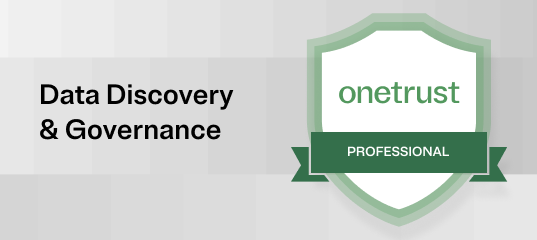The National Institute of Standards and Technology Cybersecurity Framework (NIST CSF) is a recent yet increasingly important security framework. Introduced in 2014 as an executive order during the Obama administration, it represents a collaborative effort between industry and government to enhance cybersecurity for critical infrastructure.
While The National Institute of Standards and Technology (NIST) offers a range of reference materials and special publications, such as the NIST 800-53 and NIST 800-171, the Cybersecurity Framework is specifically designed to help “organizations better understand and improve their management of cybersecurity risk.”
In this article, we explore the fundamentals of the NIST CSF, its benefits to your organization, and provide guidance on implementing the framework across teams.
What is NIST CSF?
NIST CSF stands for the National Institute of Standards and Technology Cybersecurity Framework. It’s a set of voluntary guidelines, standards, and best practices to help organizations improve their cybersecurity posture.
Considered to be the gold standard when it comes to cybersecurity, NIST CSF provides guidelines to manage and reduce risks in a way that is future-proof and complements an organization’s existing practices.
Unlike most security frameworks, NIST CSF doesn’t explicitly prescribe controls. The framework is flexible enough to adapt to organizations of all sizes and industries, including government, critical infrastructure, and public or private sectors.
The NIST CSF approach is outcome-driven and can be customized to specific business environments and program maturities, which means every NIST CSF initiative will look different.
This flexibility is one of many reasons organizations rely on software to guide them through managing NIST frameworks. Specialized tools provide control guidance, policy templates, and repositories to manage your NIST CSF compliance program.
OneTrust Certification Automation helps you build, scale, and automate your security compliance program
Is NIST CSF compliance mandatory?
Compliance with the NIST Cybersecurity Framework is not mandatory. It is a voluntary guidance document that organizations can choose to adopt to enhance cybersecurity practices, such as incident response and recovery activities, and align with industry standards. However, certain industries or sectors may have specific regulatory or contractual requirements that reference the framework as a recognized standard.
Who needs NIST CSF?
The NIST CSF is recommended for any organization that wants to enhance its cybersecurity risk management practices, including critical infrastructure providers, government agencies, industry sectors, service providers, and cybersecurity professionals.
It serves as a roadmap for organizations beginning to build their security posture and a means to establish consistent cybersecurity guidelines and stakeholder collaboration for those with more mature programs.
Benefits of using NIST CSF
Why use the NIST CSF if it's not mandatory?
NIST CSF stands out because of the collaborative way it was developed. Thousands of professionals across different roles and industries contributed their insights on cybersecurity, resulting in a framework implementation that provides both flexibility and holistic value.
Organizations benefit from using NIST CSF framework because it:
- Describes desired security outcomes, instead of a checklist of controls
- Is accessible and understandable by everyone, despite their background
- Is applicable to any type of risk management decisions across industries
- Promotes effective collaboration and communication among stakeholders
- Defines the breadth of cybersecurity standards
- Spans data breach prevention and reaction
In today's world, cybersecurity is critical to the success of every organization. Although NIST CSF is not mandatory, it remains the most widely acknowledged framework for establishing a robust and sustainable cybersecurity risk management process.
How does NIST CSF work
The NIST CSF provides a structured and flexible approach to help organizations manage cybersecurity risks.
The framework consists of three main components:
- Framework Core: A set of cybersecurity activities and outcomes that use simplistic and non-technical language to enable communication between teams. Divided into functions, categories, and subcategories, the Core is used to assess security posture, establish targets, and implement strategies to enhance cybersecurity capabilities.
- Implementation Tiers: Tiers help assess how an organization's cybersecurity risk management practices align with the NIST CSF characteristics. The four tiers, ranging from Partial (Tier 1) to Adaptive (Tier 4), evaluate the effectiveness and integration of cybersecurity risk management within the organization. Note that these tiers do not necessarily indicate maturity levels, but rather the degree of alignment with the framework's principles.
- Profiles: A representation of the organization's requirements, objectives, risk appetite, and resources against the desired outcomes of the Framework Core. By comparing current profiles to target profiles, organizations can create a clear roadmap for implementing the NIST CSF and advancing their cybersecurity strategies.
The three components are further divided into five functions of cybersecurity. As the highest level of abstraction included in the framework, the functions serve as the backbone of an organization’s cybersecurity program. They enable effective communication, informed decision-making, and help to build a holistic and successful cybersecurity program.
The five functions in NIST CSF are:
1. Identify: The Identify Function assists in understanding and managing cybersecurity risks by identifying critical assets, systems, data, and potential threats. By developing a clear understanding of the cybersecurity landscape and resources, it enables organizations to prioritize efforts in alignment with business needs.
Examples of outcome categories within the Identify Function:*
- Identifying cybersecurity policies established within the organization to define the Governance program as well as identifying legal and regulatory requirements regarding the cybersecurity capabilities of the organization
- Identifying a supply chain risk management strategy including priorities, constraints, risk tolerances, and assumptions used to support risk decisions associated with managing supply chain risks
2. Protect: The Protect Function outlines safeguards and measures to protect critical infrastructure services against potential cyber threats.
Examples of outcome categories within the Protect Function:
- Protections for identity management and access control within the organization including physical and remote access
- Empowering staff within the organization through awareness and training including role based and privileged user training
3. Detect: The Detect Function defines the appropriate activities to identify and detect cybersecurity incidents in a timely manner.
Examples of outcome categories within the Detect Function include:
- Ensuring anomalies and events are detected, and their potential impact is understood
- Implementing security continuous monitoring capabilities to monitor cybersecurity events and verify the effectiveness of protective measures including network and physical activities
4. Respond: The Respond Function outlines activities and strategies to effectively detect and contain the impact of cybersecurity incidents.
Examples of outcome categories within the Respond Function include:
- Ensuring response planning process are executed during and after an incident
- Managing communications during and after an event with stakeholders, law enforcement, external stakeholders as appropriate
5. Recover: The Recover Function identifies activities and strategies to maintain and restore systems and services back to normal after a cybersecurity incident.
Examples of outcome categories within the Recover Function include:
- Ensuring the organization implements recovery planning processes and procedures to restore systems and/or assets affected by cybersecurity incidents
- Implementing Improvements based on lessons learned and reviews of existing strategies
The five functions are further broken down into 22 categories and 98 subcategories, which are mapped to other informative references, such as ISO 27001 and NIST SP 800-53.
In addition, the proposed draft of NIST CSF 2.0 adds a "Govern" function to emphasize the importance of cybersecurity governance.
The difference between NIST CSF vs. NIST 800-53
NIST CSF and NIST 800-53 (also known as the Security and Privacy Controls for Federal Information Systems and Organizations) are two widely known frameworks aimed at improving cybersecurity.
While they serve the same primary purpose, the two frameworks are designed to complement each other in practice and implementation. NIST CSF offers a broader, more flexible approach for organizations to safeguard against cyberattacks and NIST 800-53 provides a robust set of specific controls and guidelines for federal information systems.
The table below breaks down the differences between NIST CSF and NIST 800-53:
| NIST CSF | NIST 800-53 | |
| Scope | - A broader framework applicable to organizations across all sectors - A flexible and customizable approach to manage cybersecurity risks | - A comprehensive set of security and privacy controls for federal information systems - Tailored for use by federal agencies and their contractors |
| Structure and content | - Organized into three main components: the Core, Implementation Tiers, and Profiles (covered later in this article) | - A catalog of security and privacy controls organized into 20 families - Controls are categorized into three classes: management, operational, and technical |
| Application | - Voluntary and can be adopted by organizations of all sizes and sectors - Allows organizations to customize and align their cybersecurity efforts to their unique risk landscape and business objectives | - Compliance is mandatory for federal information systems (it’s not mandatory for non-federal organizations, but may be required as part of a government contracts) - Primarily used by federal agencies and their contractors to meet federal cybersecurity requirements |
| Compliance and assessment | - Evaluated through self-assessment or third-party assessments - Organizations can use the framework as a guide to measure their cybersecurity maturity and identify areas for improvement | - Assessed through security controls testing and certification processes, such as the Federal Risk and Authorization Management Program (FedRAMP) and the Federal Information Security Modernization Act (FISMA) |
Read our other article on the difference between ISO 27001 and NIST CSF.
Are there NIST CSF audits?
No, there is no formal audit process or attestation for NIST CSF. While a customer or prospect won’t request compliance in order to do business, NIST CSF is an internationally recognized and risk-informed framework that shows your organization prioritizes protecting critical assets, invests in risk mitigation, and maintains a strong security posture.
How much does NIST CSF cost?
The short answer is that NIST CSF costs much less than any security framework that requires an audit. A SOC 2 audit, for example, can cost tens of thousands of dollars, depending on the size and scope of your organization.
NIST CSF is a cost-effective option because there’s no required audit. An organization can decide how much it will invest in aligning with NIST CSF standards.
Additionally, the framework can be used to identify and prioritize the most critical vulnerabilities and activities to maximize the impact of its investment.
Navigating NIST CSF
NIST CSF is a universally recognized framework for enhancing cybersecurity practices. Although not mandatory, compliance with the framework shows an organization's commitment to data security, critical asset management, and a high baseline of security standards.
By describing desired security outcomes rather than specific controls, NIST CSF offers a future-proof approach to help any organization establish a robust and sustainable cybersecurity risk assessment and risk management program.
OneTrust Certification Automation helps businesses demystify compliance with built in content and expert guidance. Test once, comply many with our proprietary shared evidence framework, and fast track the external audit process with centralized oversight for both internal and external stakeholders.














